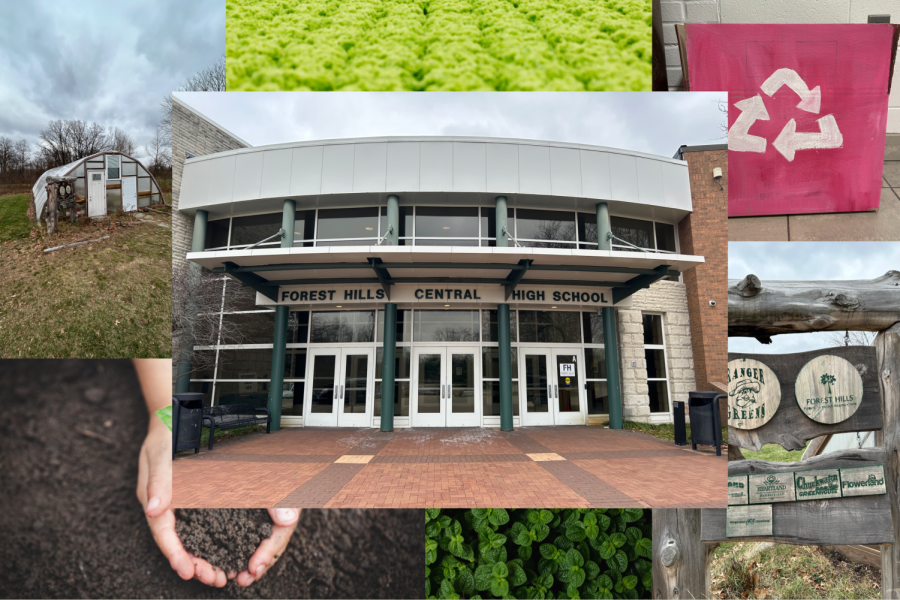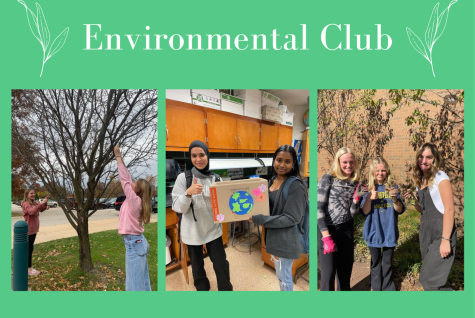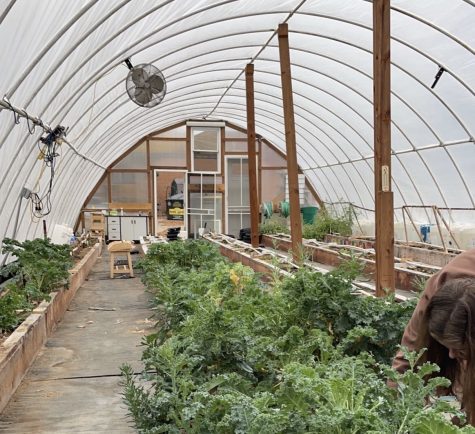A collage of photos related to FHC and its environmental impact.
FHC is consciously focusing on its environmental impact and moving toward a more sustainable future
Environmental Science teacher Chad Scholten is a proud ‘tree-hugger.’
Being an environmentalist—and teaching others to claim that title—for as long as he has means Scholten has seen students’ relationships with the environment continuously develop over the years. Watching as the environment became ‘trendy’ and as students became more invested in the environment year after year has been interesting.
No matter what, he believes that any action of preservation by students is a positive step in the right direction, no matter where their interest stems from.
“Some may scoff at [environmental trends],” Scholten said. “There were times when there were ‘hippie tree-huggers’ or ‘Birkenstock-wearing frisbee throwers.’ I still feel [trends] are still helping out. Whether they’re doing it for likes on social media or because they really want to, it’s all positive.”
Teaching his Environmental Science classes, Scholten fosters a home for his students to learn of how important their ecological footprint is and to freely explore how they can make positive changes. With emphasizing points such as water usage, food consumption, carpooling, and many more, he makes sure if a student didn’t join the class as a ‘Birkenstock-wearing frisbee thrower,’ they have a good opportunity to leave as one.
Scholten’s influence, education, and curiosity don’t conclude there though. As a resident environmentalist in FHC’s walls, he encourages many changes in the right direction. This has been seen time and time again like the implementation of FHC’s greenhouse, his work with The Environmental Club, and many more vital efforts. Scholten also remains incredibly educated on the building’s environmental impact; something vastly important in the big picture side of things.
“[FHC] is an old building,” Scholten said. “It’s easy to say ‘I’m going to build a new building and implement all of these environmentally conscious practices,’ but it’s harder for an old building. We have upgraded our heating systems, [and] the next step would be [improving] the lighting. That [would be done with] LED light bulbs. I’ve [also] tried to [encourage compost]; it’s hard because you have to get everyone [involved], but it would be nice to not throw as much food away in the cafeteria and compost it instead.”
With ‘next steps,’ however, there are always excellent improvements to celebrate. This of course includes the implementation of a better heating system, meaning FHC’s environmental footprint is progressing toward a more sustainable future.
“[As a school], we do a great job of recycling and [collecting] recycling and paper,” Scholten said, “so we’re keeping that out of the garbage, and that’s a step in the right direction.”
Scholten, however, isn’t the only staff member who has noted and encouraged the recycling efforts as a school; principal Steve Passinault also finds great pride in FHC’s emphasis on recycling.
Passinault finds a desire to recycle to be an incredible and important addition to the school environment. It’s encouraging to see students and staff alike come together towards one common goal, attempting to make such a positive difference.
“There has been kind of an up-and-down recycling effort,” Passinault said. “I think it’s based on student initiative working closely with Mr. Scholten and his Environmental Science classes. The recycling efforts have been [our] main point of emphasis.”
These efforts for FHC to reduce its waste production means all students are willing to recycle in classrooms, the cafeteria, and in the hall. Teachers’ commitment in cutting down on paper usage and encouraging students to recycle in their classrooms have also been a huge help to the cause.
Although these efforts are incredibly important, large efforts such as the reduction of energy usage also need to be emphasized. Luckily, the district has been working on these issues, and Passinault is thrilled about what these advancements mean for FHC.
“The district is moving toward all LED lights,” Passinault said. “It just takes some time to [implement these lights] into however many buildings we have in this district. [But] that’s the goal—to change to all LED lighting. The district is [also] exploring solar panels on all three high schools. People were here just before break exploring our roofs to see if the structure would support solar panels; that’s kind of in the early stages right now, so that’s something exciting.”
With such exciting advancements to the building, it’s important for the individuals within FHC to continue behaving in an environmentally conscious manner. Passinault appreciates that in such an academically acclaimed school, such vital subject matter is being covered.
Passinault greatly values students learning more about the environment and their impact on it and thinks the best way to encourage environmentally sustainable activities is through education.
With the environmental science classes, students are learning about greenhouse gases, the environment. The greenhouse has also been a great teaching tool for project-based, hands-on learning. Kids are learning about taking care of the environment and composting.
— Steve Passinault
“With the environmental science classes, students are learning about greenhouse gases, the environment,” Passinault said. “The greenhouse has also been a great teaching tool for project-based, hands-on learning. Kids are learning about taking care of the environment and composting.”
This vital education has been a big inspiration to Environmental Club president Mia Martin. Her leadership position in the club has allowed her to make a big difference on FHC’s environmental footprint. With her leadership skills, the club has made major strides.
“[In the Environmental Club],” Mia said, “we try to make the school more aware of their footprint by introducing things like making the recycling boxes we see around the school, making signs, and informing people. That’s most important.”
It’s students like Mia who ensure hope for a brighter future at FHC and help from faculty members like Passinault and Scholten excellently foster this hope.
Although FHC may seem like a small aspect of a very large world, the advancements the school is making are very important. The actions of individuals within the school are making huge waves, and it’s vital for students and teachers alike to remain focused on preserving the environment.
“Solutions to these types of larger problems start with individuals,” Mia said. “If everyone, at least, tries a little bit to make some sort of difference, the overall difference will be a lot bigger than they think.”


